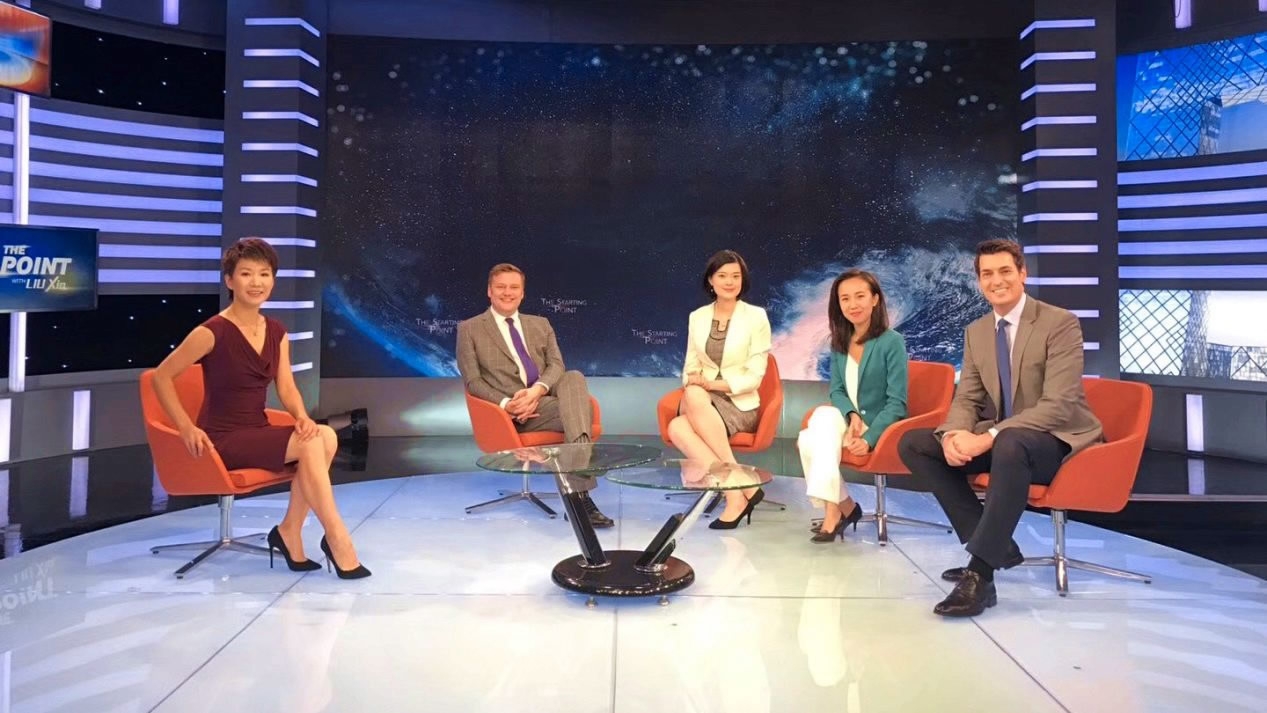
Opinions
18:44, 22-Sep-2017
How do you set about correcting misconceptions about China?
By CGTN's The Point

“China is so misunderstood, within China and outside China, especially outside China and especially in the United States.” Jonathan Betz, an anchor of CGTN told the ‘Point with LIU Xin’ (@thepointwithlx) when sharing his experience of doing a story of ‘China Footprint’ - a fifteen-episode documentary features how China has faced challenges and seized opportunities in a global context, turning itself into one of the world's largest economies over the last few decades.
Jonathan’s story for the documentary series was focused on China’s bullet train technology. Ten years ago, China didn’t have a single high-speed train. Now it has the world’s fastest and largest network. He visited the Southwest Jiaotong University in Chengdu, where they have a pretty large piece of machinery - a simulator to train the engineers how to drive a bullet train.

“What I think is most remarkable about it is the sheer fact that it can be done.” he said, “The idea that you could build a bullet train within ten years, not mention a huge bullet train network…I think we just astound most Americans. ‘It can’t be done’… ‘There’s too much bureaucracy’… ‘Too much red tape’… While China somehow gets it done. And they get it done well. If China can do it, why can’t America do it?”
Jeff Moody, another anchor for CGTN, echoed Jonathan’s view. “It’s obviously about having the money and the ware of all. But (more importantly ) it is having the ‘get up and go to do it’. You have to want to do it. China very much at the moment wants to do these things.” he said.
Another big misconception the series tackled was stereotypes about the Chinese government. Before making the series as an outsider looking into the Chinese government, Jeff found it all very sedate, very serene and very quiet. But after talking with Jia Qingguo, dean of the School of International Studies at Peking University, he now found that Chinese governance isn’t actually that far removed from the West. It’s democratic too, albeit democracy Chinese-style.

Tao Yuan, CGTN reporter who is based in Sichuan province in Southeast China, did a story on poverty alleviation in China’s villages. In an effort to stamp out poverty, China is resettling millions of its poorest citizens from remote regions. But building houses for them in cities and towns is merely just the beginning. Challenges are starting to emerge and the major one is how to convince them to move.

“I (The government) give you job training. And I find a job for you. I develop industry for you, so you will be able to work in these fruit farms, fruit plantations or factories. So it’s a package service.” Tao explained. But even thus, some of the villagers do not want to move. One reason is that they don’t want to abandon their traditional way of life and fear of the dramatic changes.
“In the United States, the approach was very different. It was more about providing better education, providing better training, but it relies on the individuals taking the initiative to lift themselves out of poverty.” Comparing both ways of dealing with poverty in the Unites States and China, Jonathan found it interesting to see the differences of governance.

“In China, the government is very consistent. They don’t have the pressure of “democracy”, of staying in power and being reelected. So they can plan in a little bit long terms and do the necessary painful reforms.” Liu Xin said.

Zou Yun, CGTN reporter/ CGTN photo
Zou Yun, CGTN reporter/ CGTN photo
Zou Yun interviewed Mr. Long Yongtu, the chief negotiator of China’s WTO accession. According to him, the biggest lesson China has learned from the 15 years of arduous negotiations is that China now is open and is a rule-based market. Just as Zou Yun put it, “achieving the win-win is the key idea that we should deliver.”
Despite all the documentaries that the different journalists produced none of them thought that all the misconceptions about China would simply vanish anytime soon.

SITEMAP
Copyright © 2018 CGTN. Beijing ICP prepared NO.16065310-3
Copyright © 2018 CGTN. Beijing ICP prepared NO.16065310-3